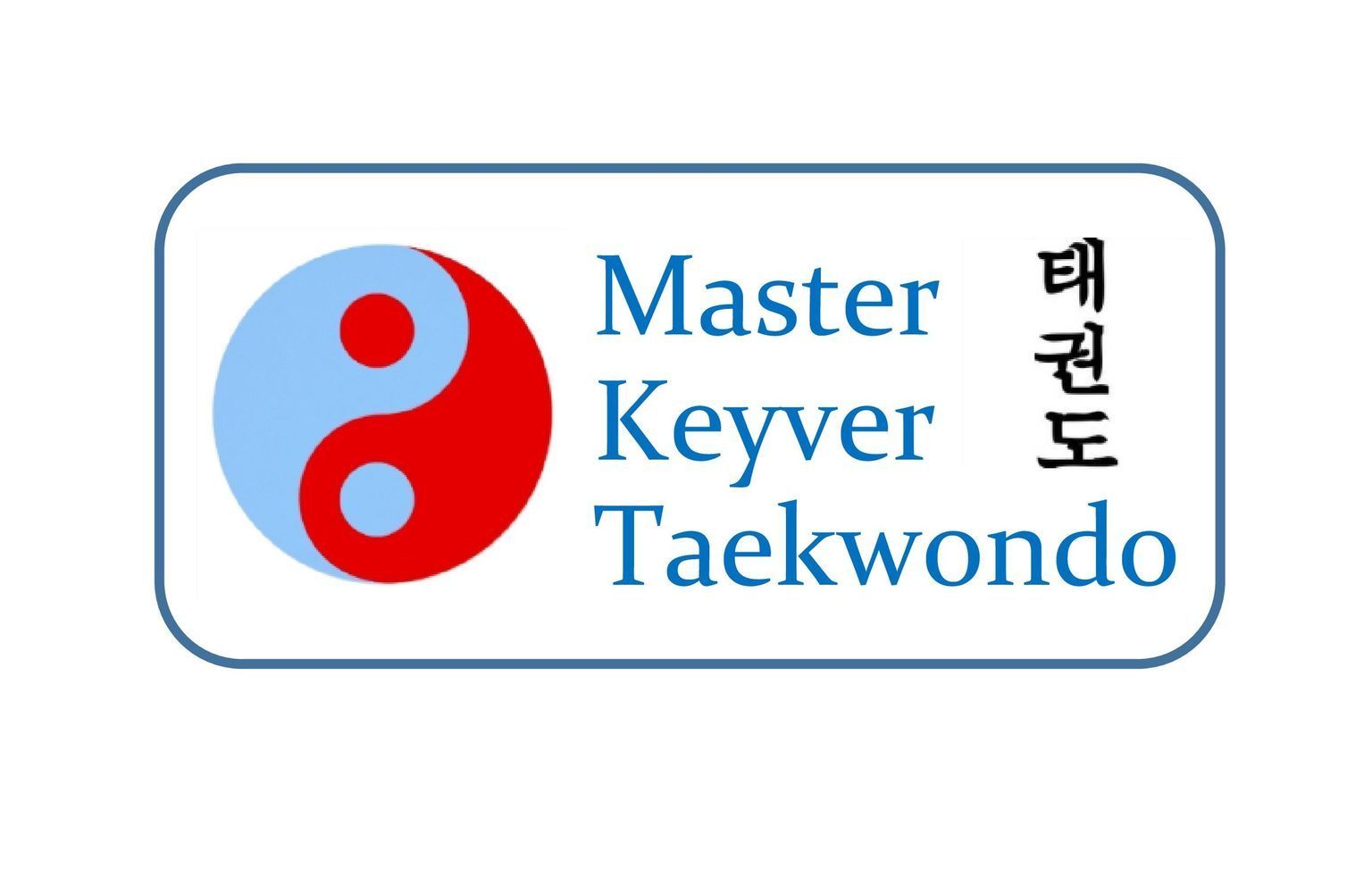Seogi (서기) Stance
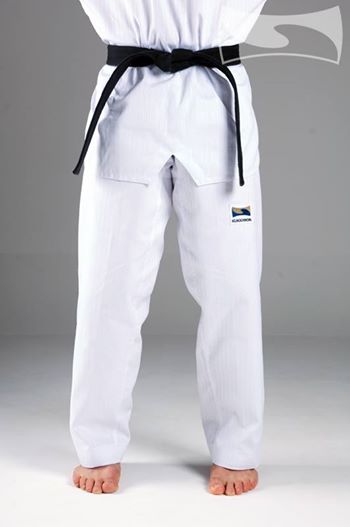
Narani-seogi (나란히서기) Parallel Stance>
A stance where both feet are parallel to each other. This is a stance with both knees straightened, the center of gravity kept in the middle and the inside edges of both feet facing together. When the end of toes face inward, it is called anjjong-seogi (Inward Stance) and when they face outward, pyeoni-seogi (At Ease Stance).
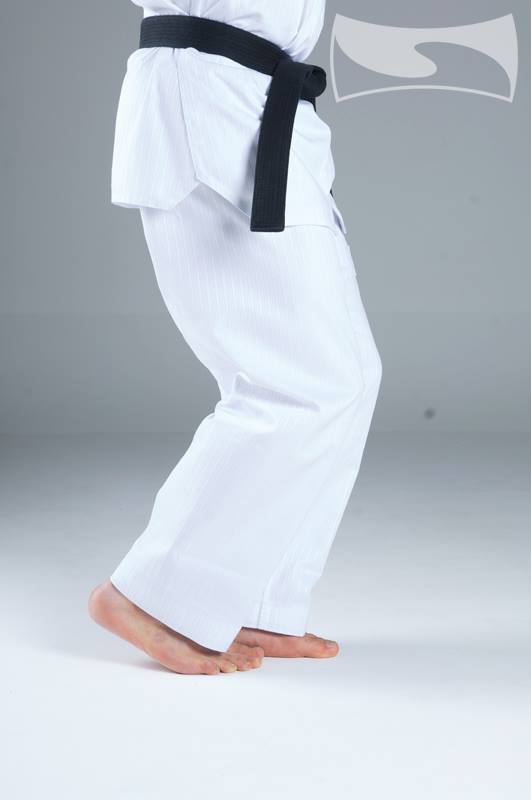
Gyeotdari-seogi (곁다리서기) Assisting Stance
A posture of bending the legs by moving the center of gravity on one foot and keeping the center of balance with the assistance of the other foot. Both knees are lowered as in juchum-seogi (Riding Stance). The big toe of the assisting rear foot is brought inward to touch the middle part of the inside edge of the supporting front foot. With the supporting foot in place, the ball of the assisting foot only touches the ground when its heel is lifted off the ground.
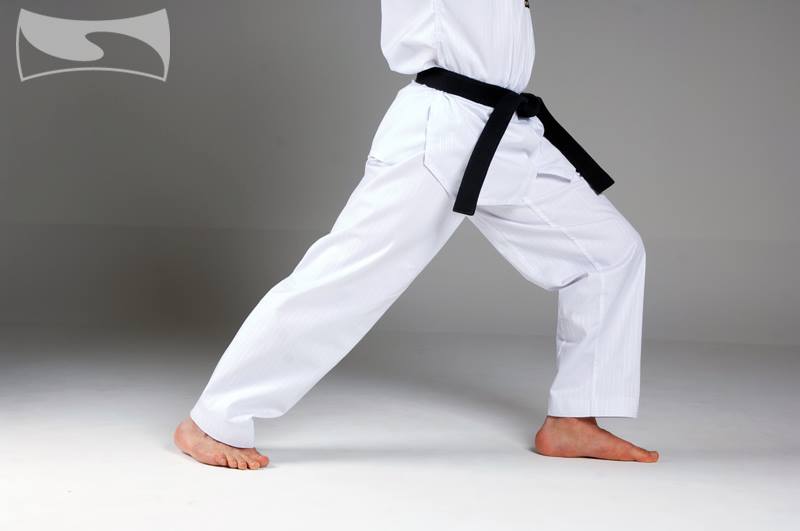
Apgubi (앞굽이) Forward Stance
A stance with the center of gravity on the front leg. This is a stance of shifting the center of gravity forward and loading much of the weight on the supporting front leg.
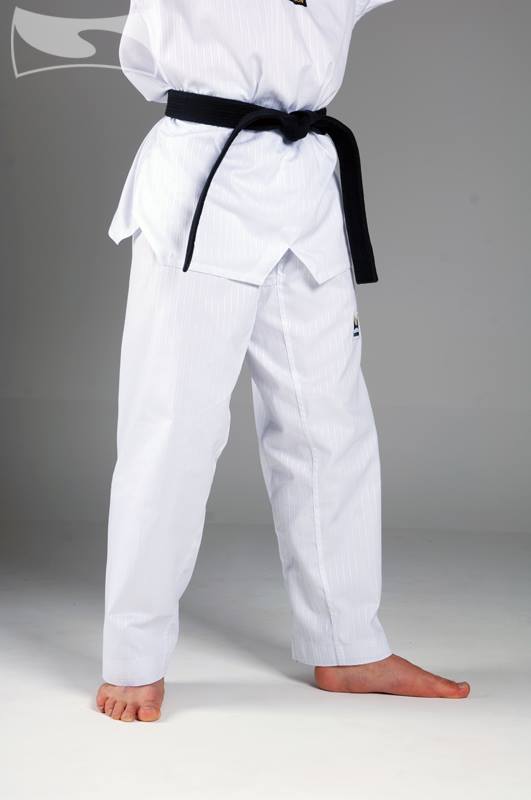
Yeop-seogi (옆서기) Side Stance
A stance of pivoting the right or left foot perpendicular to the inside edge of the other foot from narani-seogi (Parallel Stance). With both knees straightened, the width between the two feet is about the length of one foot. The end of the advancing foot should be at a right angle to the other foot.
Various postures of standing on one's feet in order to perform offensive and defensive techniques.
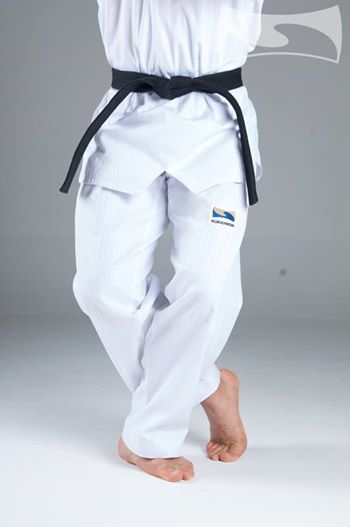
Kkoa-seogi (꼬아서기) Cross Stance
A stance with both feet crossing each other when moving or making a turn to the front, back or side. In the state of lowering the center of gravity, this is a posture used when shifting the performer’s body to the front, back or side. When the moving foot is shifted to the front of the supporting foot, it is called ap-kkoa-seogi (Front Cross Stance). When shifted to the back of the foot, dwi-kkoa-seogi (Rear Cross Stance).
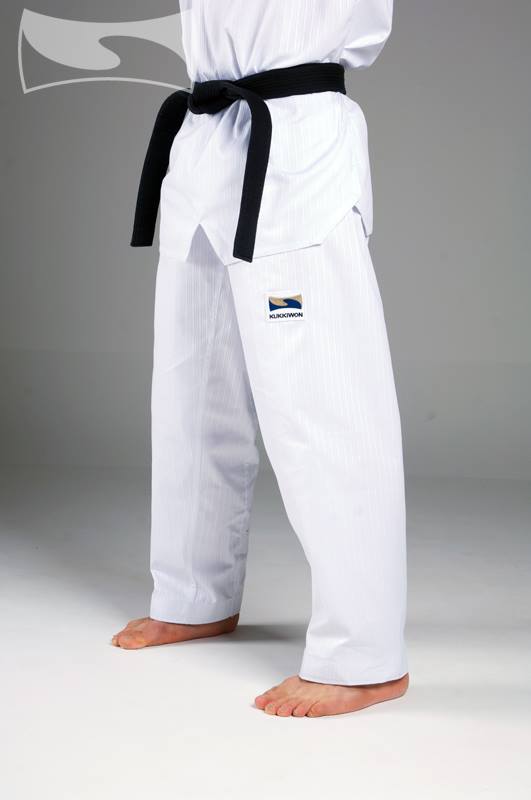
Mo-seogi (모서기) Diagonal Stance
A stance of facing diagonally with the center of gravity evenly distributed to both legs. This is a stance where both feet are turned diagonally to attack the opponent or evade his or her offense.
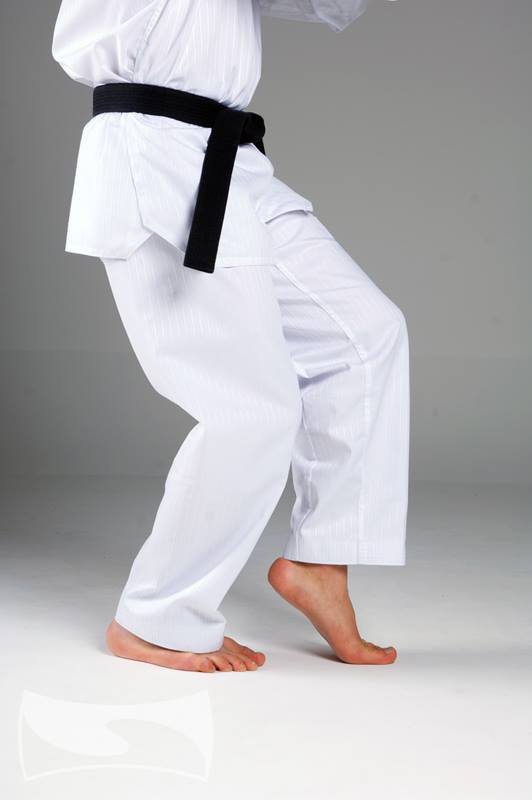
Beom-seogi (범서기) Tiger Stance
A lowered stance of ap-seogi (Walking Stance) with both knees placed close enough to touch each other. This is a stance to make both small and big motions easy toward the front or back. Both knees are placed close enough to touch each other with the heel of the front foot and the ball of the rear foot on a similar line. The heel of the front foot is off the ground while the center of gravity is almost on the rear foot.
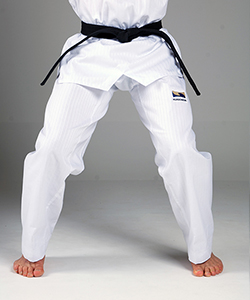
Juchum-seogi (주춤서기) Riding Stance
A stance where both feet are parallel, both legs slightly bent with the width of two-one foot between them. When looking down at the knees of both legs which are bent, they should be on the same line with the ends of feet. The trunk and both knees and shins should be upright. The trunk, knees and shins are in the upright position. When the ends of feet are turned inward, it is anjjong-juchum-seogi (Inward Riding Stance). When one foot is one step forward, it is ap-juchum-seogi (Forward Riding Stance). When one foot is diagonally forward, then it is called mo-juchum-seogi (Diagonal Riding Stance).
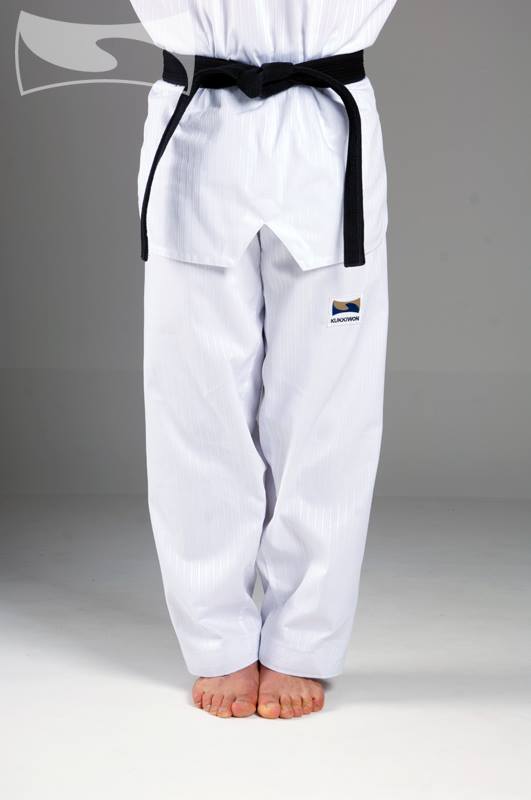
Moa-seogi (모아서기) Closed Stance
A stance with the inside edges of both feet completely closed together and both knees straightened. Before or after poomsae, this posture is adopted to focus the performer’s mind and relieve his or her physical tension. When only the balls of the feet are closed together, it is called apchuk-moa-seogi, and only the bottoms of the heels are closed together, dwichuk-moa-seogi.
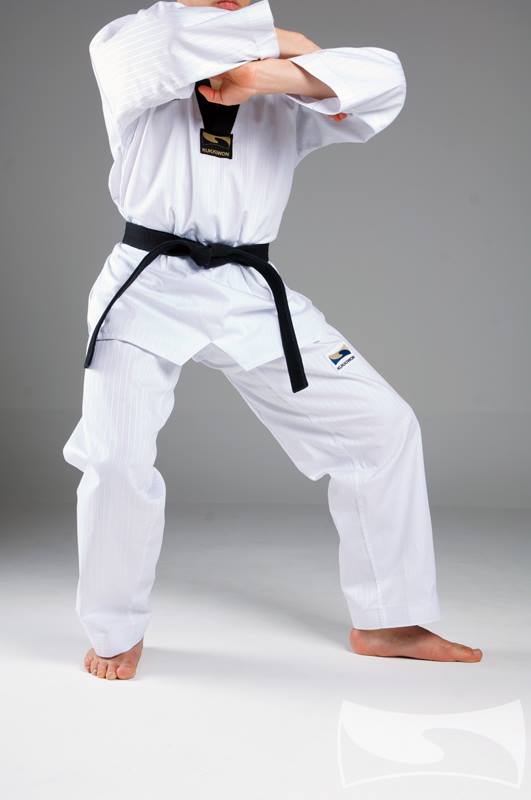
Dwitgubi (뒷굽이) Back Stance
A stance with the center of gravity on the rear leg. With both feet bent, the center of gravity is shifted backward and much of the weight is on the supporting rear leg. If the front leg is shifted more to the center of the body, this posture is called ojja?seogi (‘ㅗ’ Shape Stance).
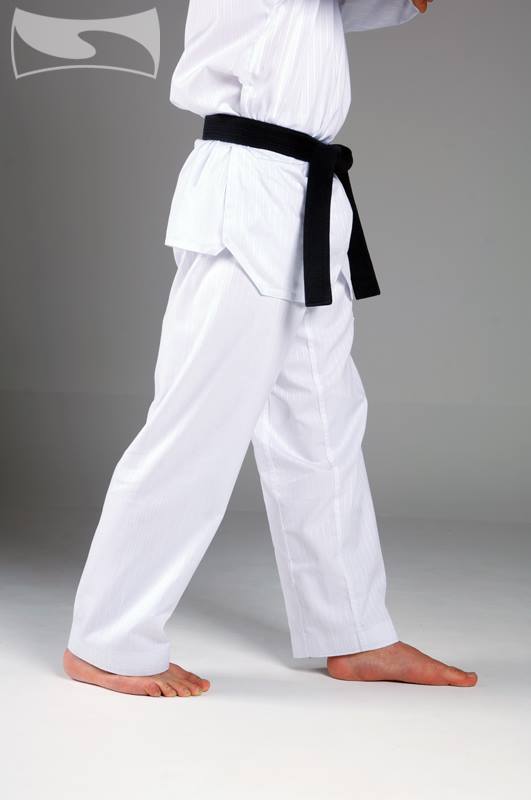
Ap-seogi (앞서기) Walking Stance
Stance of taking one walking step forward. The width between the two feet is about the length of one walking step and the center of gravity remains in the middle with the trunk in an upright position.
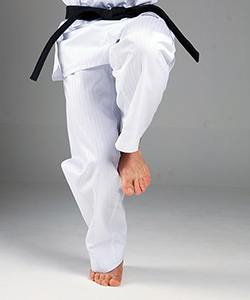
Hakdari-seogi (학다리서기) Crane Stance
A stance of lowering one knee, while lifting up the other foot to place its inside edge near the inside edge of the knee or the crook of the knee (or the inner knee). This stance is named after the shape of a crane standing on one foot. The center of gravity is placed on one foot while the other foot is placed on the side of the knee of the supporting leg to stay on balance.
